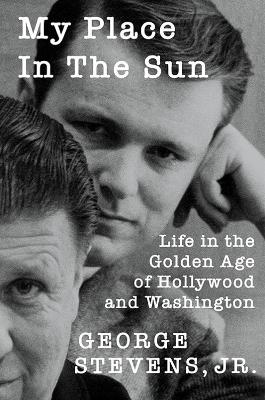Screen Classics
1 total work
George Stevens Jr. grew up on movie sets. His grandmother, aunts, uncles, and other family members were all entertainers, but it was his father, director George Stevens Sr., who cast the longest shadow. The elder Stevens won best director Oscars for A Place in the Sun (1951) and Giant (1956) and was nominated for directing The More the Merrier (1943), Shane (1953), and The Diary of Anne Frank (1959).
George Jr. worked by his father's side while also establishing himself as a successful television director. He learned a variety of skills from the master, including cinematography, storytelling, managing difficult actors, and maintaining artistic control over one's work. As a result of Stevens Sr.'s position in the Screen Directors' Guild during the height of McCarthyism, Stevens Jr. also learned firsthand about freedom of artistic expression and protection of civil rights - and the navigation of treacherous political waters. In 1961, Edward R. Murrow recruited Stevens Jr. to head up the film and television department for the United States Information Agency, pushing him out of his father's shadow and into the work that would become his greatest legacy. Travelling to film festivals around the world as USIA delegate, he became aware of the urgent need to promote and preserve America's film legacy and founded the American Film Institute. AFI saved thousands of movies, scouring the country for copies of forgotten or lost films that were then catalogued and deposited at the Library of Congress. Under Stevens Jr.'s direction, AFI also issued grants to support the work of young, independent filmmakers and established the AFI Conservancy, a school for film arts. Shortly after that, Stevens Jr. created the Kennedy Center Honors, a uniquely American tradition honoring the lifetime contributions made by those in performing arts.
In My Place in the Sun, George Stevens Jr. recounts his lifelong passion for and commitment to the art of film, along the way providing an intimate look into the artistry of one of Hollywood's greatest directors. Both an insightful history of Hollywood's Golden Age and a savvy insider's account of post-World War II Washington culture, this magnificent autobiography brings to life almost ninety years of American film history and culture.
George Jr. worked by his father's side while also establishing himself as a successful television director. He learned a variety of skills from the master, including cinematography, storytelling, managing difficult actors, and maintaining artistic control over one's work. As a result of Stevens Sr.'s position in the Screen Directors' Guild during the height of McCarthyism, Stevens Jr. also learned firsthand about freedom of artistic expression and protection of civil rights - and the navigation of treacherous political waters. In 1961, Edward R. Murrow recruited Stevens Jr. to head up the film and television department for the United States Information Agency, pushing him out of his father's shadow and into the work that would become his greatest legacy. Travelling to film festivals around the world as USIA delegate, he became aware of the urgent need to promote and preserve America's film legacy and founded the American Film Institute. AFI saved thousands of movies, scouring the country for copies of forgotten or lost films that were then catalogued and deposited at the Library of Congress. Under Stevens Jr.'s direction, AFI also issued grants to support the work of young, independent filmmakers and established the AFI Conservancy, a school for film arts. Shortly after that, Stevens Jr. created the Kennedy Center Honors, a uniquely American tradition honoring the lifetime contributions made by those in performing arts.
In My Place in the Sun, George Stevens Jr. recounts his lifelong passion for and commitment to the art of film, along the way providing an intimate look into the artistry of one of Hollywood's greatest directors. Both an insightful history of Hollywood's Golden Age and a savvy insider's account of post-World War II Washington culture, this magnificent autobiography brings to life almost ninety years of American film history and culture.
